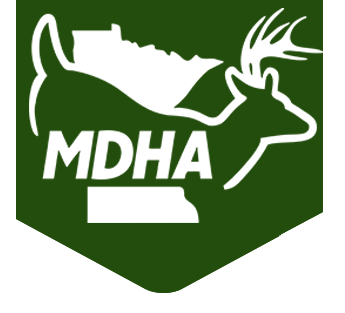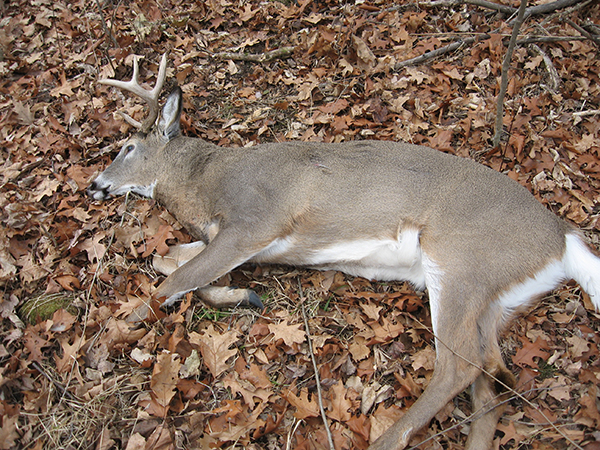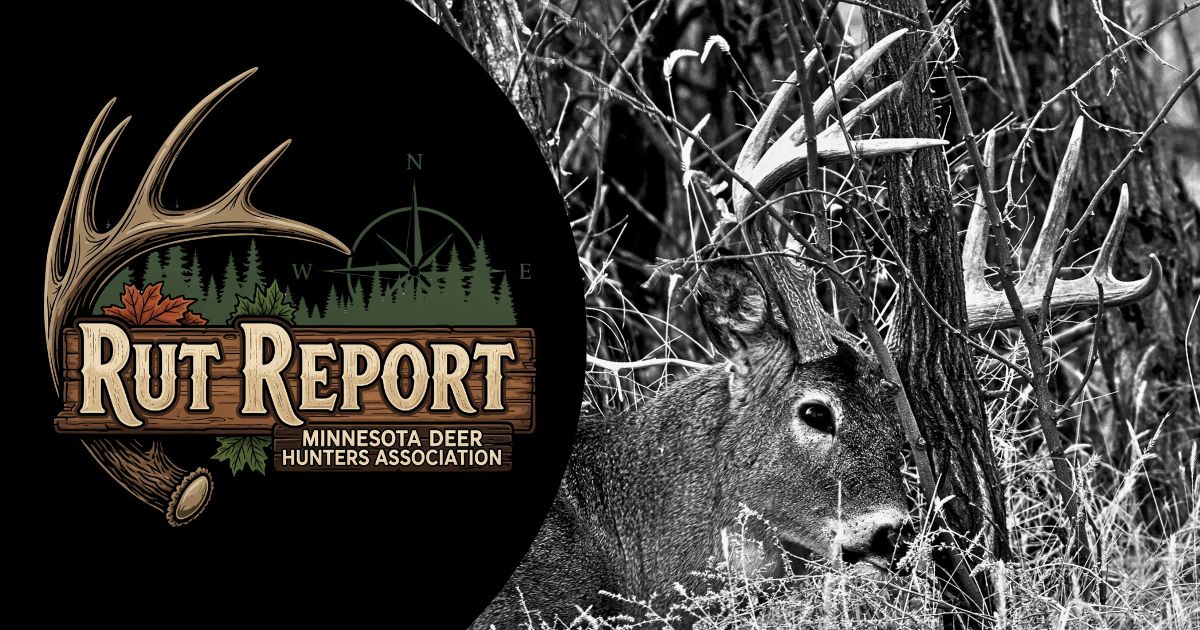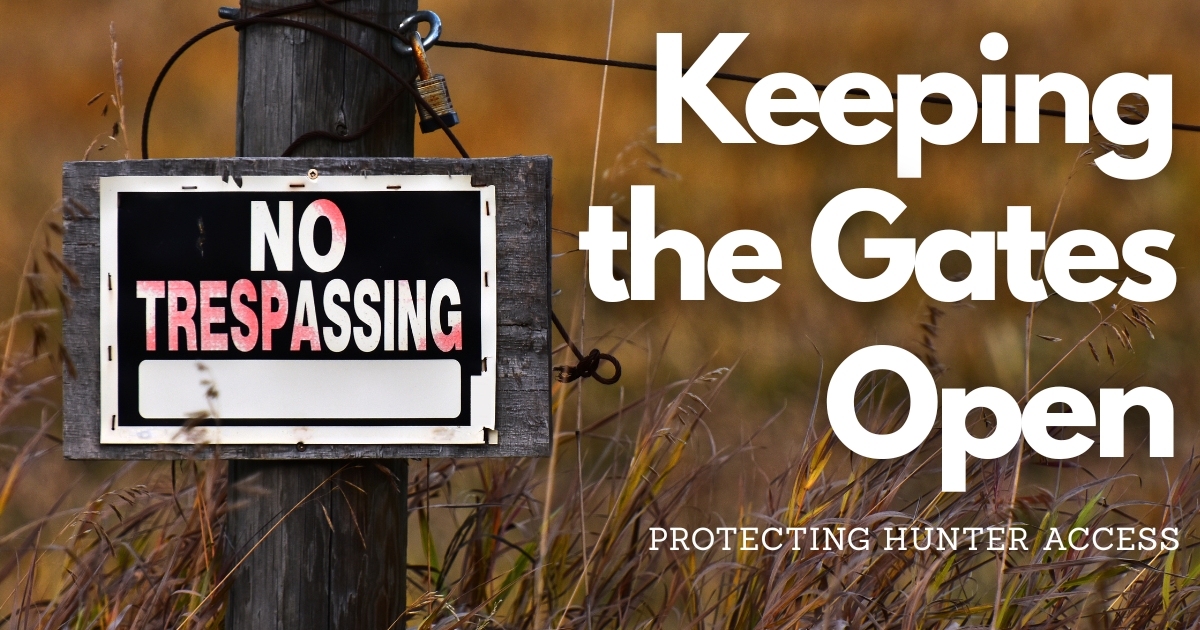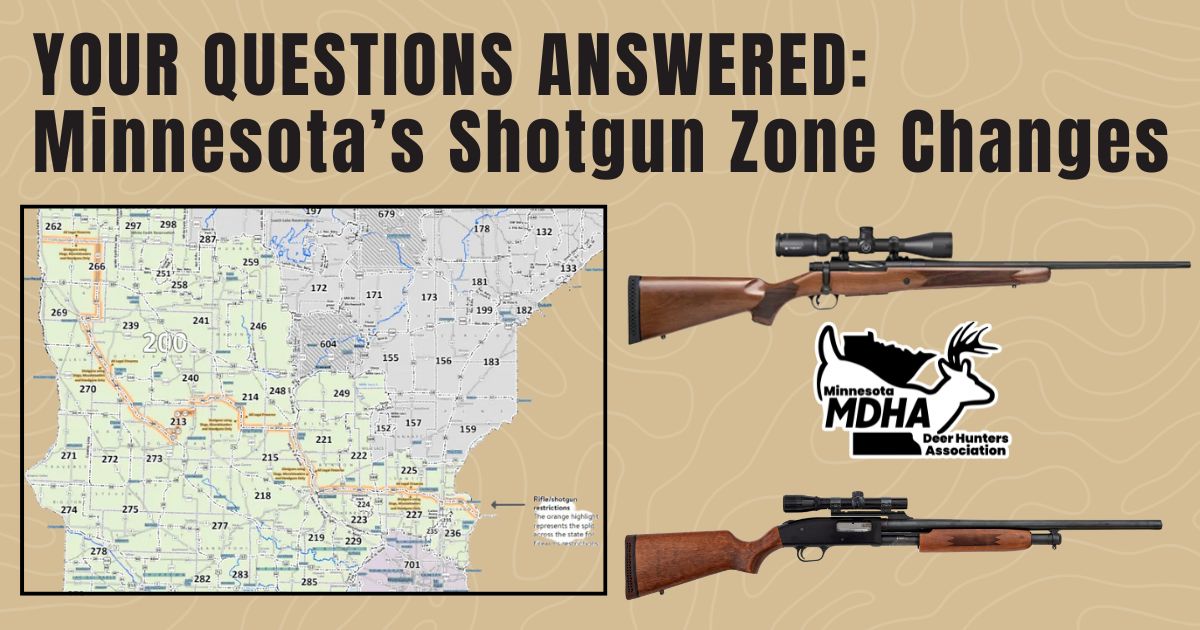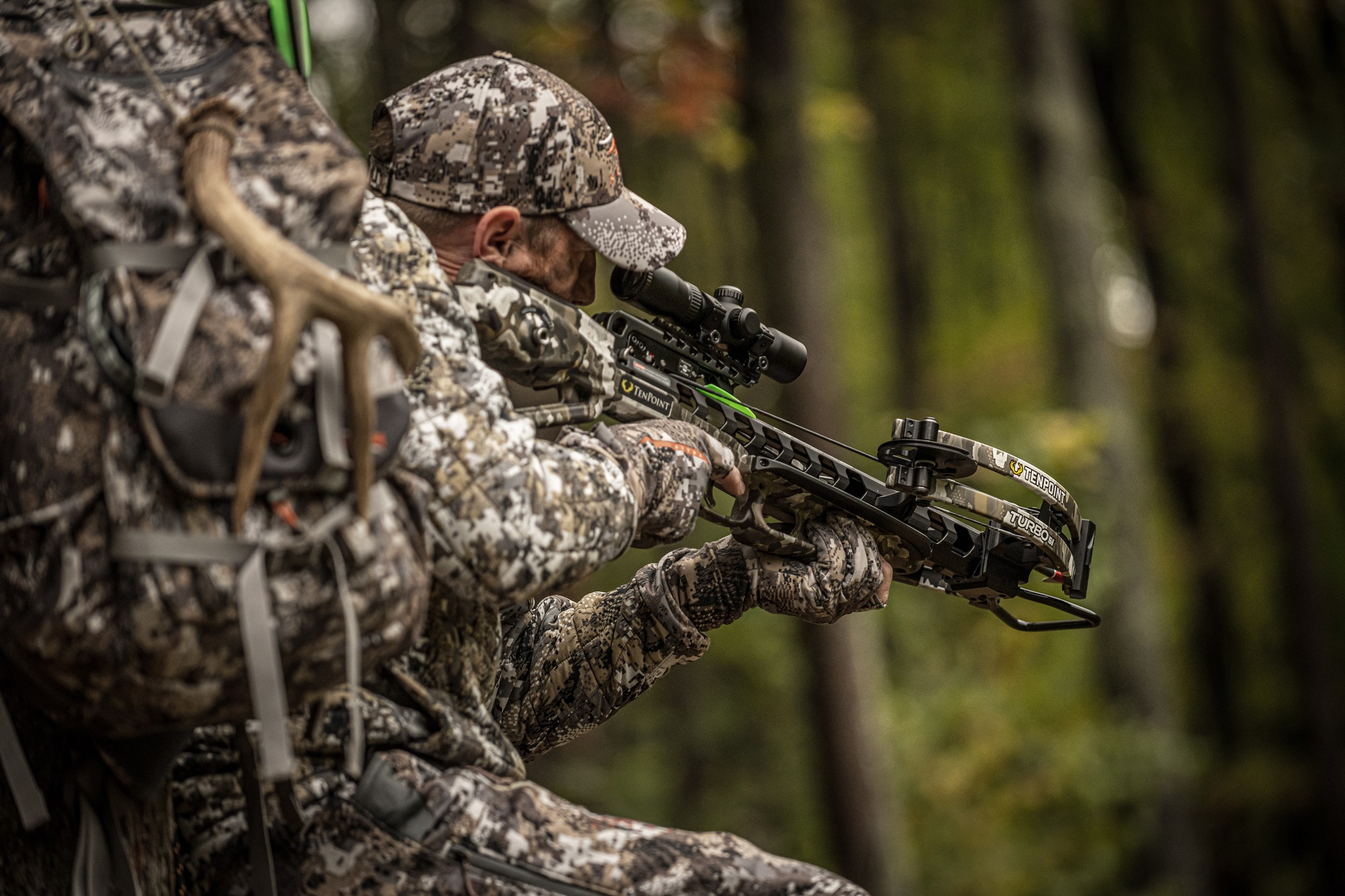
- MDHA Admin
- From Whitetales
- Hits: 5231
Crossbows for all during 2023 archery season: How did we get here, and where will it lead?
- MDHA Admin
- From Whitetales
- Hits: 5231
Minnesota deer hunters have learned throughout the years to be leery of regulation changes that are the product of the state Legislature.
This year was no different.
When the legislative session’s dust settled this spring, a new law had been approved – OK’d by both the House and Senate and the bill signed by Gov. Tim Walz – that will allow anyone and everyone to use crossbows to kill deer during the entirety of the state’s archery season, beginning this year.
For both casual and ardent Capitol observers, the rule change came as a surprise – out-of-the-blue legislation that will no doubt have its supporters and its detractors. Will it affect deer harvest? Will it affect the state’s deer herd? Officials with the Minnesota Department of Natural Resources say it’s up to them to make that determination as best they can, with somewhat limited tools at their disposal.
How it came to be
While the Minnesota Deer Hunters Association announced support for all-access crossbow legislation late this winter, the state’s DNR took no position on the subject. That’s in part because, according to Barb Keller, department officials were awaiting a legislative hearing on a bill pertaining to crossbow use.
“But there was never a hearing, so no official position was developed,” said Keller, the department’s big-game program leader.
To say the least, the adoption of the crossbow legislation wasn’t a civics lesson in transparency. Near the session’s end, both the state House and Senate had respective omnibus bills pertaining to the outdoors – massive pieces of legislation covering the gamut of various proposals that had been discussed for months. However, neither bill contained language to allow crossbow use for all during the archery season.
Strange things occur during conference committee debate of such bills. Exhibit A: The compromise reached did include a crossbow allowance during the archery season.
“It’s not a common way for that to happen,” Keller said. “It’s a big change.”
If the plan for crossbow use had been a DNR initiative, she said, there would’ve been multiple ways in which the department could have taken the hunting public’s temperature regarding the issue – public meetings, surveys, etc.
The bill’s chief sponsor – it was introduced early in the legislative process – was Rep. Samantha Vang, a DFLer from Brooklyn Center. Vang is a third-termer whose occupation listed on the House of Representatives website is that of housing advocate. An aside: Vang was chair of the House Agricultural Finance and Policy Committee. Other assignments included the Environment and Natural Resources Finance and Policy Committee, and the Legacy Finance Committee.
Her bill simply removed the phrase “age 60 or over” from the crossbow use statute (97B. 037).
And it added two stipulations. First, the bill includes a “sunset” date of June 30, 2025. Keller said it’s unlikely the measure will be repealed.
Second, the legislation requires the DNR to, by Oct. 1, 2025, develop an “analysis of crossbow hunting’s effect on (the) deer population.”
Easier said than done, official say, and probably not an order given much thought. Such a request would require extensive research during a narrow window in time.
“We’ll attempt to assess (the law’s) effect on deer harvest,” Keller said.
That’s a task that would be within the greater realm of possibility and yet yield information that could be useful and accurate.
Jared Mazurek, executive director of MDHA, said the organization supports the change, and stated such in February, as the legislative session was getting under way.
“Our members voted at chapter meetings to have their delegates support the crossbow bill at our state directors’ meeting,” Mazurek said. “It wasn’t unanimous by any means, but we did get a majority in favor of that. So, our official stance was in support of crossbows for all during the archery season.”
Concerns?
Keller said the legislation’s language – or lack thereof – will make tracking an expected increase in crossbow use, as well as deer harvest via crossbow, a challenging proposition. The DNR isn’t allowed to create a separate archery license (albeit the same price) for crossbow users. And information regarding harvest, too, may be limited.
At both ends, data could be A) insufficient and/or B) skewed, according to Keller.
Questions asked of license buyers by license vendors is typically hit or miss, and the legislation didn’t specifically call for it. Declaring method of harvest, voluntarily, could incomplete be as well. According to the 2023 Minnesota Hunting and Trapping Regulations handbook, “Archery hunters may be asked at registration if they harvested their deer with a crossbow or vertical bow.”
Keller said the DNR is planning, in order to perhaps obtain better information, to mail a survey to successful archery deer hunters following the 2024 season.
Meanwhile, the department could get an inkling of the crossbow effect on the deer population as one of the many factors that contribute, along with hunter harvest in general, weather, habitat, etc., if there’s a spike in the number of archery licenses sold or, perhaps, a notable increase in archery deer harvest. In recent years, resident archery deer hunters have numbered around 90,000, according to Keller. Deer harvest during that season has been in the 20,000 to 25,000 range.
She said the DNR, at this stage, has limited concerns about the new law’s effect on the overall deer population, with the possible exception of “lottery”-designated deer permit areas.
“We’re keeping an eye on the lottery areas where either-sex harvest is allowed,” Keller said in late July, just prior to the release of 2023 deer-hunting regulations. “If we see a steadily increasing harvest, we might have to consider rule changes to deal with that.”
In early August when those regulations were announced, the DNR said 38 DPAs had reduced bag limits or lottery permits, the result of consecutive harsh winters in certain regions of the state.
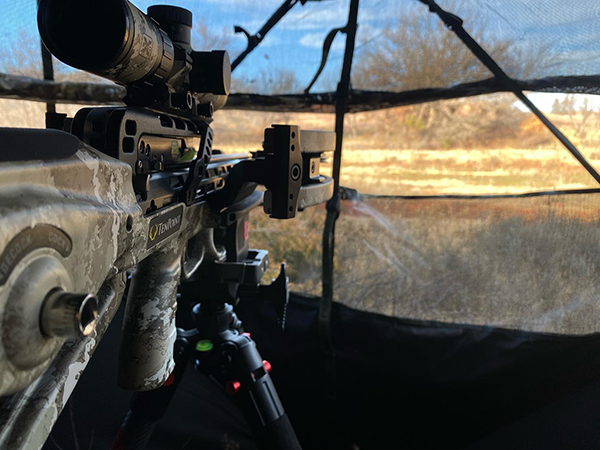
Views from the outside
Full-inclusion crossbow use during archery seasons is now fairly common across the Midwest and elsewhere. Neighbor to the east, Wisconsin, allowed their use nearly a decade ago.
Kip Adams, chief conservation officer for the National Deer Association, said at least three-quarters of all states now allow crossbow use for either all of or part of their archery seasons.
Concerns about possible overharvest of deer have been without cause, he said.
“No state that has (crossbow inclusion) has overharvested deer because of it,” Adams said. “And most (states) have seen more participation during the archery season.”
Hunting season timing also plays a role in both harvest and participation (the latter typically wagging the tail of the former).
If, for example, the archery season gives hunters first crack at bucks during the late-October to early-November rut (as it does in Wisconsin), “people definitely get excited about it,” Adams said.
However, Minnesota’s firearms deer-hunting season occurs in early November, possibly diminishing the allure of the archery season, even if crossbows now are an option.
Both Keller and Adams say one notable positive in allowing crossbow use for all during the archery season might be increasing access – for those young or old, or even some in between, who for one reason or another are unable to effectively use vertical bows.
Dean Bortz, editor of Wisconsin Outdoor News, reports that crossbow use during the archery season in that state continues to be a source of contention among hunters, although probably to a lesser extent than it was when implemented in 2014.
“It’s been a lot of ‘H&H’ – happiness and heartburn,” Bortz said about the issue’s continuing ability to polarize archery hunters.
While the crossbow’s overall effect on deer harvest in that state might be limited, “It has caused a shift in buck harvest, no doubt about that,” he added.
In Wisconsin, the season was created via administrative rule by the state’s Natural Resources Board. Further, crossbow use must be specified during license purchase.
“At least we can tell who’s shooting what,” Bortz said.
The structure of Wisconsin’s crossbow-during-archery-season rule allowed for the collection of vast amounts of information, resulting in a 141-page evaluative report five years after full inclusion was allowed (https://djcase.com/sites/default/files/chronicle-files/Wisconsin-Crossbow-Report-Final_0.pdf).
Among the findings, as stated in the report’s executive summary: “The preponderance of the evidence from these multiple lines of inquiry (including license sales, surveys, etc.) suggests that all-inclusive crossbow use is not currently a biological concern for deer herd management or a pressing social issue for most hunters.”
Of note: Half of the deer hunters surveyed for the report said they took up crossbow use because they could not use a vertical bow.
And, while crossbow technology (as with most all technologies) has advanced since the Wisconsin report was written four years ago, respondents to surveys there reported “no significant difference was found in the reported maximum ranges for crossbow and compound bow users.”
Going to buy one?
As it is with compound bows, plenty of options running from fairly inexpensive to quite expensive are available on the crossbow front.
A quick web search of crossbows available at Bass Pro Shops offered this: 18 crossbow options available under $500, 31 options from $500 to $1,000, 24 options from $1,000 to $2,000, and 16 options from $2,000 and more.
The most spendy? A $3,800 TenPoint Nitro 505 (505 feet per second speed) Oracle X.
Shop wisely, and be certain to read carefully the DNR’s regulations pamphlet regarding crossbow use and all deer-hunting regulations for 2023.
Spielman, editor of Outdoor News (Minnesota), is likely to remain a user of a compound bow for archery deer hunting, and will attempt to frequently allow his Labrador to stretch her legs during pheasant and duck hunts in between time spent in a deer stand this fall.
